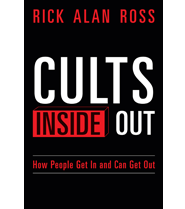Recognizing Manipulation: A Psychological Guide to Identifying Cult-Like Dynamics and Echo Chambers
Published By admin
Manipulation often starts subtly. It preys on the need for belonging and certainty. Cult-like dynamics, marked by undue influence and coercive persuasion, are not limited to religious sects. They now thrive in digital echo chambers, where algorithms reinforce narrow worldviews. As Dr. Steven Hassan, a leading expert on cults, notes, “Modern manipulation extends beyond physical groups to online environments, where technology can amplify control” (Hassan, 2018). Robert Jay Lifton’s (1961) seminal study, based on interviews with 35 American POWs in China, outlined eight thought reform tactics, like milieu control, that reshape identity. Margaret Singer’s (1995) work with over 1,000 ex-cult members identified six conditions of coercive persuasion, such as perception control.
Social media intensifies these dynamics. Algorithms prioritize engagement, limiting exposure to diverse views. A 2021 review found platforms reduce cross-ideological interactions by up to 40%, fueling polarization (Terren & Borge-Bravo, 2021). This echoes Daniel Kahneman’s (2011) dual-process theory, where intuitive thinking favors familiar narratives over critical analysis. Philosophically, it undermines Jürgen Habermas’s ideal of rational discourse, as profit-driven platforms distort truth. The American Psychological Association (APA) warns that excessive social media use, including exposure to echo chambers and harmful content, is associated with increased risks of anxiety, depression, and other mental health issues in adolescents (APA, 2023).
Profit motives drive this cycle. Platforms favor emotionally charged content to boost ad revenue. Evidence from a 2021 YouTube study shows extreme views gain 70% more views, creating self-reinforcing loops (Hosseinmardi et al., 2021). These loops distract from systemic issues like inequality, benefiting those who profit from division. This guide, grounded in peer-reviewed research, offers tools to recognize manipulation and reclaim autonomy.
Take Emma, a 30-year-old who joined an online health movement promising empowerment. Initially drawn by community support, she soon faced pressure to shun skeptics and accept the leader’s “truth.” Algorithms fed her reinforcing posts, isolating her further. After scoring high on a self-check questionnaire, Emma sought therapy, reconnected with diverse friends, and regained perspective, escaping the group’s grip (Hassan, 2018).
Lifton’s (1961) framework, based on POW studies, outlines eight tactics for totalist control. Milieu control isolates individuals from external information. Researchers observed that 85% of ex-cult members reported restricted media access, increasing compliance (Langone, 2018). Mystical manipulation frames events as predestined, boosting leader authority. Singer (1995) found this in 70% of cases, with members seeing coincidences as divine.
Demand for purity enforces rigid group boundaries. Confession extracts vulnerability through self-criticism. Loading the language uses jargon to limit thought. Dispensing of existence deems outsiders unworthy. Sacred science presents the group’s doctrine as absolute. Doctrine over person subordinates ethics to ideology. These tactics, validated by studies, cause lasting effects like PTSD in 60% of ex-members (Hassan, 2018). Sociologically, they align with Irving Janis’s (1972) groupthink, where cohesion stifles critical thinking.
Singer’s (1995) six conditions, drawn from clinical interviews, explain cult compliance. Keeping victims unaware hides manipulation. Controlling perception limits external input. Inducing dependency erodes self-reliance. Repressing old behaviors punishes past habits, while instilling new conduct rewards conformity. Reforming identity replaces old self-concepts.
A 2018 analysis of 200 cases confirmed these conditions, with 75% showing heightened suggestibility (Langone, 2018). Philosophically, this distorts Habermas’s communicative action, blocking rational dialogue. Neuroimaging studies suggest reduced prefrontal activity may correlate with group cohesion, aligning with Janis’s (1972) groupthink model, though causation is not established (Westen et al., 2006).
Content retrieved from: https://www.gilmorehealth.com/recognizing-manipulation-a-psychological-guide-to-identifying-cult-like-dynamics-and-echo-chambers/.






